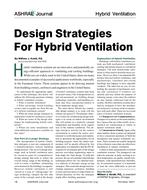It seems that the reason so many professions and subjects are difficult to understand is because of the way they are explained. If lawyers talked in English instead of Latin, possibly people would know whether they should feel guilty or not; if doctors had better penmanship, people would have a better idea of what dastardly concoction the pharmacist is preparing for them. Engineering is the most confusing profession of all. Engineers talk in scientific notation, which is no language at all, but, instead, a random disorder of numbers.
When one looks beyond the professions and into subject matter, there are two subjects which are overly cloaked in mystery. One of these is how to make a nuclear bomb, and the other is mechanical seals, the latter being the more secretive. Anyone who has attended technical courses at a trade school, college or university, is well aware that many pages in the testbooks are devoted to the calculations and proper choosing of such fascinating subjects as bearings, belts, gears, and screw threads. Yet, one has to be a Sherlock Holmes to find more than a passing paragraph on mechanical seals.
It is unfortunate that one sometimes has to feel that this is not an oversight but intentional. Many of the articles on mechanical seals seem to zero in on the hydrodynamic and hydrostatic theories surrounding them. This is fine except that most people do not understand the theories before or after reading about them. Even if they are understood, what can be done with them?
Ninety percent of the mechanical seals used follow a basic, rather simple, concept. This paper plans to explain this concept. Once the aim is understood, the number of ways to get there are limited. This is similar to setting up the environmental controls for a mechanical seal. At first, it appears that years of experience are necessary in order to determine whether one should flush a seal, hook up the stuffing box to the pump discharge by-pass, quench the atmospheric side of the seal faces, or just install the seal. Once it is recognized that a seal runs best in a cool (less than 375F for most seals), clean (under 2% abrasive content), lubricating fluid, one knows what to do. It will also be recognized that there are only seven or eight different types of environmental controls that can be set up for a mechanical seal. If a top-of- the-line seal has been used, and the couple of environmental controls which apply to your application have been tried, probably no longer life will be gained by switching from one brand of mechanical seals to another.
Citation: Symposium, ASHRAE Transactions, Volume 82, Part 1, Dallas, TX
Product Details
- Published:
- 1976
- Number of Pages:
- 9
- File Size:
- 1 file , 570 KB
- Product Code(s):
- D-DA-76-19-1


